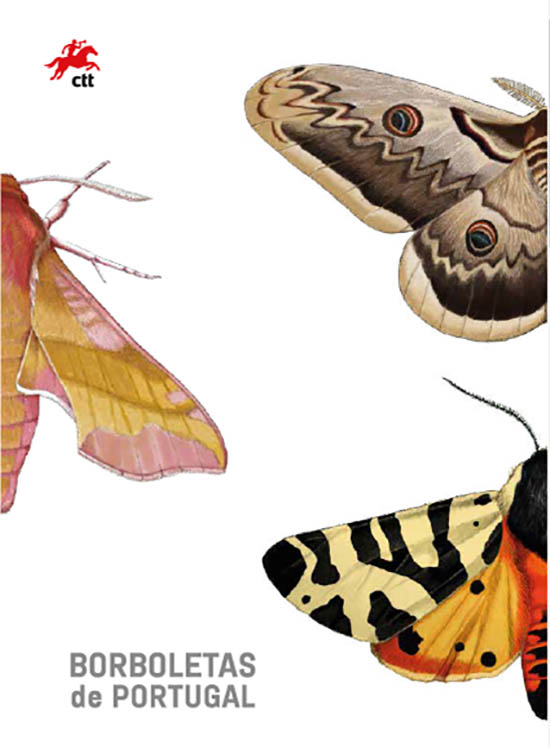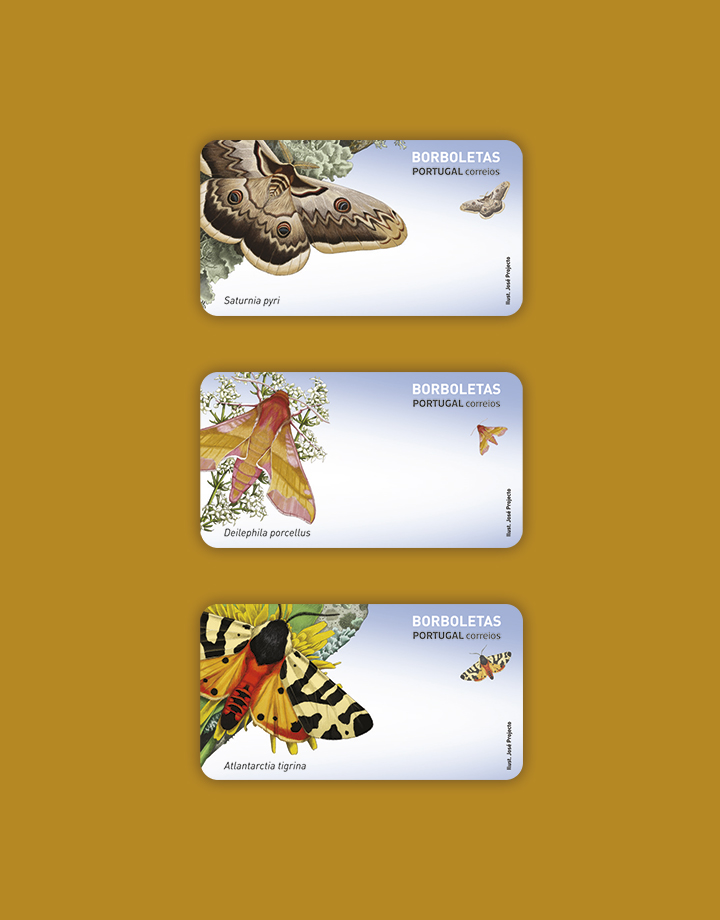 Saturnina pyri, Deilephila porcellus e tiger atlantic these are the scientific names of the three butterflies that CTT, as of today, represent in an issue of stamps, in the form of self-adhesive labels.
Saturnina pyri, Deilephila porcellus e tiger atlantic these are the scientific names of the three butterflies that CTT, as of today, represent in an issue of stamps, in the form of self-adhesive labels.
“These species were chosen because they belong to the Portuguese fauna, even though they belong to different taxonomic groups, and they are all “moths”, contrary to what is commonly thought”, explain CTT.
A Sotumio pyri it's a kind of family moth Sotumidoe. Its distribution occurs in North Africa and along Southern Europe, to West Asia.
It lives on hot shrub or arboreal slopes, with open areas, from sea level to about 2000 meters in altitude. Parks, orchards and vineyards with shade trees are privileged areas.
This species spends the winter, usually more than one, in the cocoon and, depending on latitude and altitude, the adults are found between March and June. The caterpillar is polyphagous, feeding on deciduous trees and shrubs, especially of the family Rosaceoe, such as walnut, pear, apple, etc.
the species deilephilo porcellus belongs to the family sphingidoe, the moths of this group being commonly called sphinxes or sphinxes.
This species is distributed from North West Africa through much of Europe to China. Their habitats are generally nutrient-poor grasslands and grasslands, roadsides and low-humid wetlands.
This species generally has one life cycle per year, rarely two. It spends the winter in pupa form, with caterpillars being found from June to September. Adults usually emerge between May and July. The caterpillar feeds mainly on plants of the genus Goliath.
 A tiger atlantic it's a family moth erebidoe, which can be found in the north of the Iberian Peninsula, the south of France and the north-west of Italy, in generally rocky habitats, between sea level and up to 1600 meters in altitude.
A tiger atlantic it's a family moth erebidoe, which can be found in the north of the Iberian Peninsula, the south of France and the north-west of Italy, in generally rocky habitats, between sea level and up to 1600 meters in altitude.
It is a univoltine species, that is, it has only one life cycle each year. They spend the winter in the form of a caterpillar, becoming mature in March/April, pupating under rocks.
Adults can be seen flying at night from April to July. Its larva is polyphagous, and its food includes plants of the genus Syringo, Euphorbio and Genisto.
The illustrations of the labels were in charge of the illustrator and painter José Projecto. The first-day cancellations will be made at CTT's Restauradores stores in Lisbon and the Municipality in Porto.
This philatelic issue is presented as “a form of international dissemination of the nature of our country, projecting with quality, both the fauna and the illustration made in Portugal, which CTT is very fond of associating with”.


















Comments